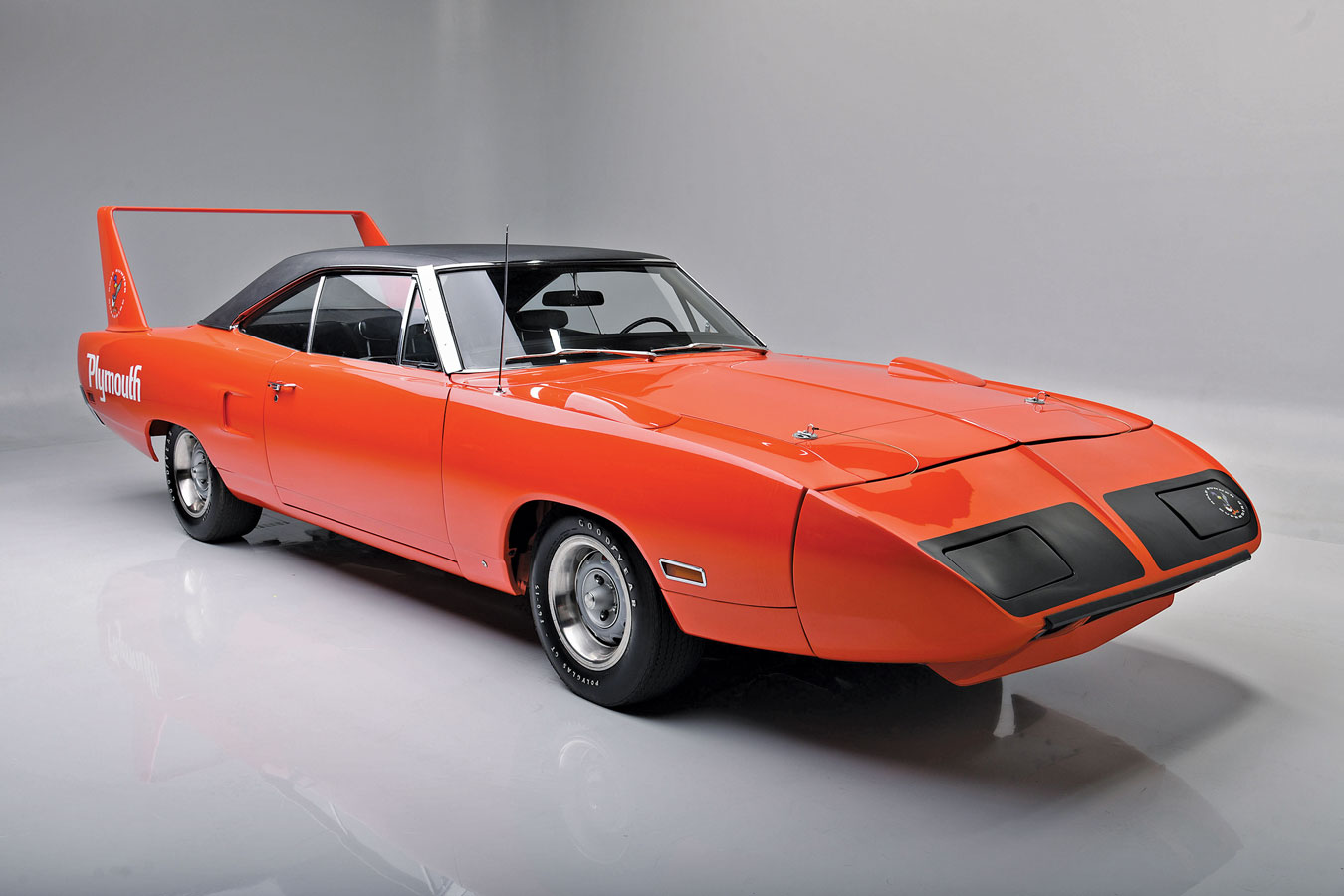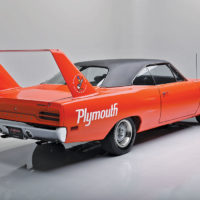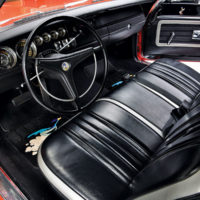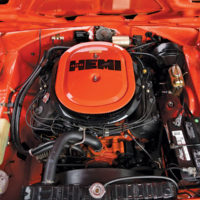SCM Analysis
Detailing
| Vehicle: | 1970 Plymouth Hemi Superbird |
| Years Produced: | 1970 |
| Number Produced: | 1,935 |
| SCM Valuation: | $345,500 |
| Tune Up Cost: | $500 |
| Chassis Number Location: | VIN plate on the driver’s side instrument panel behind windshield |
| Engine Number Location: | Pad on top of the block near the water pump |
| Club Info: | Daytona-Superbird Auto Club |
| Website: | http://www.superbirdclub.com |
| Alternatives: | 1969 Dodge Charger Daytona, 1969 Ford Torino Talladega, 1969 Mercury Cyclone Spoiler |
| Investment Grade: | B |
This car, Lot 734, sold for $1,650,000, including buyer’s premium, at Barrett-Jackson’s Las Vegas, NV, auction on July 2, 2022.
Chrysler’s Plymouth Division had a problem in 1969. Its star NASCAR driver, none other than the legendary Richard Petty, had defected to Ford. The rest of the Plymouth teams were floundering on the superspeedways. To lure Petty back to the Plymouth nest, the bullet-nosed, high-winged Superbird was hatched for the 1970 season.
Plymouth Superbirds are hardly rare. At least 1,920 had to be built and certified by the FIA before they were allowed in NASCAR competition. Plymouth turned to contractor Creative Industries to build the required cars, just as Dodge had done for its “Winged Warrior” Daytona in 1969.
Since these were specially constructed vehicles, colors were limited to seven hues, and options were reduced from the full catalog available for the ’70 Road Runner on which the Superbird was based. A 440-ci, 4-barrel V8 was standard, with a 440 6-barrel and the legendary 426 Hemi optional. Starting at $4,280, plus $841.05 for the Hemi option, they were expensive. Superbirds powered by the 426 were uncommon, with 135 total built, 77 with automatic transmissions, 58 with the 4-speed.
Win on Sunday…
Pete Hamilton won the 1970 Daytona 500 in a Petty Enterprises Superbird. “The King” was well on his way to winning the 1970 NASCAR Championship until a serious mid-season crash sidelined Petty for much of the year. Still, mission accomplished for Plymouth.
Sort of. Most production Superbirds remained grounded, glued to showroom floors for months or even years. Cars often sold at a loss due to the high price, strange appearance and limited practically for daily driving.
Our subject car was restored about 20 years ago. A fine example, it wears “Tor Red” paint (about 17% had this color) and is fitted with an automatic transmission. What makes it most compelling, however, is the original documentation, including the build (or broadcast) sheet that traveled with the car down the Lynch Road line. Like the “tank sticker” found on Corvettes of that era, this is the computer printout “birth certificate” of the car, and copies were taped in various places during assembly.
As a vehicle neared completion, workers would often place a build sheet somewhere inside the car, sometimes under a seat or behind a door panel. Some cars had multiple sheets hidden, others had none. Like anything else over a half-century old now, sheets were lost or just disintegrated with time. But nothing tells the story of a Chrysler product better.
As a plus, Mopar expert Galen Govier inspected this Superbird in 2004, noting the transmission was a warranty replacement (not uncommon in street-raced muscle cars). But otherwise, all major components matched the VIN.
Bigger bucks
As nice as it is, the real question here is whether this Superbird really is worth its record-setting bid. Photos from previous sales show the same incorrect spare tire and battery that it currently has, telling us the car has been untouched for years. I wonder whether it would earn a “Gold Stock Concours” certificate at the Muscle Car and Corvette Nationals, one of the defining criteria for restoration quality.
The SCM Platinum Auction Database shows a median value of $345,000 for Hemi Superbirds, and prices have been flat for a long time, hence our “B” Investment Grade. Last year, Mecum did earn a record price for one of these at $533,500 (SCM# 6945579). Still, at $1.65m, this sale triples that price, which seems like crazy money.
Or maybe not. Barrett-Jackson sold a Tor Red Hemi Superbird in January for $990,000 (SCM# 6950526). That car was a completely factory-original time capsule with 6,074 miles on the odometer. Original documentation was also preserved, including the build sheet and warranty card. If you were looking for a Superbird that looked like it did while languishing on the showroom floor in 1970, that was your car.
Well sold
We do know there was a fierce bidding war for our subject car between at least two potential buyers, and that escalates prices abnormally. When this happens, it produces statistical outliers that complicate data analysis. Proper analysis requires as many data points as possible, and there are not yet enough to make a definitive statement, but it appears Hemi Superbirds are ascending.
It bothers me that the original-condition Superbird seems like it should have been the one to produce million-dollar bids, not a restored car like this one. Yet these recent sales seem to indicate a developing trend. Some investors move to hard assets like collector cars during times of economic uncertainty, which can change the market, and the time is now ripe for those investments. This car has to be considered well sold, and while its sky-high price may prove to be an anomaly, I do believe these Hemi ’Birds are again ready for flight. ♦
(Introductory description courtesy of Barrett-Jackson.)




